Related Research Articles
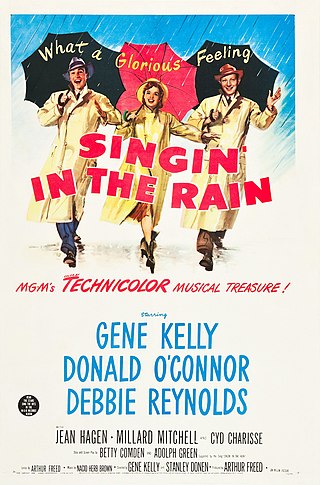
Musical film is a film genre in which songs by the characters are interwoven into the narrative, sometimes accompanied by dancing. The songs usually advance the plot or develop the film's characters, but in some cases, they serve merely as breaks in the storyline, often as elaborate "production numbers".

Marilyn Monroe was an American actress and model. Known for playing comic "blonde bombshell" characters, she became one of the most popular sex symbols of the 1950s and early 1960s, as well as an emblem of the era's sexual revolution. She was a top-billed actress for a decade, and her films grossed $200 million by the time of her death in 1962. Long after her death, Monroe remains a pop culture icon. In 1999, the American Film Institute ranked her as the sixth-greatest female screen legend from the Golden Age of Hollywood.

Greta Garbo was a Swedish-American actress and a premiere star during Hollywood's silent and early golden eras. Regarded as one of the greatest screen actresses of all time, she was known for her melancholic and somber screen persona, her film portrayals of tragic characters, and her subtle and understated performances. In 1999, the American Film Institute ranked Garbo fifth on its list of the greatest female stars of classic Hollywood cinema.

Patrick Charles Eugene Boone is an American singer, actor and composer.

Elizabeth Ruth Grable was an American actress, pin-up girl, dancer, model and singer.
A movie star is an actor who is famous for their starring, or leading, roles in movies. The term is used for performers who are marketable stars as they become popular household names and whose names are used to promote movies, for example in trailers and posters. The most prominent movie stars are known in the industry as bankable stars.

Jean Harlow was an American actress. Known for her portrayal of "bad girl" characters, she was the leading sex symbol of the early 1930s and one of the defining figures of the pre-Code era of American cinema. Often nicknamed the "Blonde Bombshell" and the "Platinum Blonde", Harlow was popular for her "Laughing Vamp" screen persona. Harlow was in the film industry for only nine years, but she became one of Hollywood's biggest movie stars, whose image in the public eye has endured. In 1999, the American Film Institute ranked Harlow number 22 on its greatest female screen legends list.
The decade of the 1930s in film involved many significant films. The year 1939, in particular, was one of the biggest years in Hollywood with MGM's release of Gone with the Wind and The Wizard of Oz.
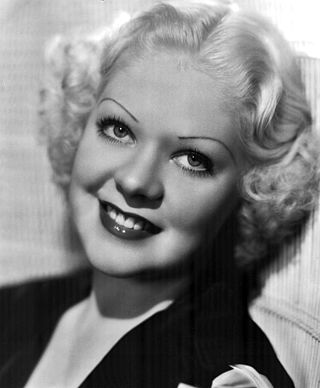
Alice Faye was an American actress and singer. A musical star of 20th Century-Fox in the 1930s and 1940s, Faye starred in such films as On the Avenue (1937) and Alexander's Ragtime Band (1938). She is often associated with the Academy Award–winning standard "You'll Never Know", which she introduced in the 1943 musical film Hello, Frisco, Hello.

June Haver was an American film actress, singer and dancer. Once groomed by 20th Century Fox to be "the next Betty Grable," Haver appeared in a string of musicals, but she never achieved Grable's popularity. Haver's second husband was the actor Fred MacMurray, whom she married after she retired from showbusiness.
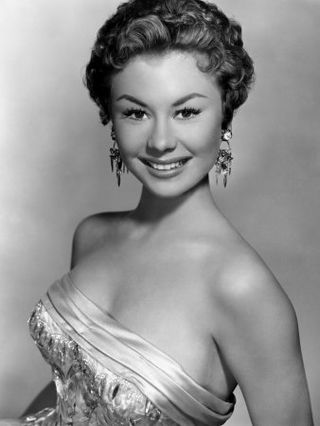
Mitzi Gaynor is an American actress, singer, and dancer. Her notable films include We're Not Married! (1952), There's No Business Like Show Business (1954), The Birds and the Bees (1956), and South Pacific (1958) – for which she was nominated for the Golden Globe Award for Best Actress – Motion Picture Comedy or Musical at the 1959 awards.

Loving You is a 1957 American musical drama film directed by Hal Kanter and starring Elvis Presley, Lizabeth Scott, and Wendell Corey. The film was Presley's first major starring role, following his debut in a supporting role in the 1956 film Love Me Tender. The film follows a delivery man who is discovered by a music publicist and a country–western musician who wants to promote the talented newcomer.
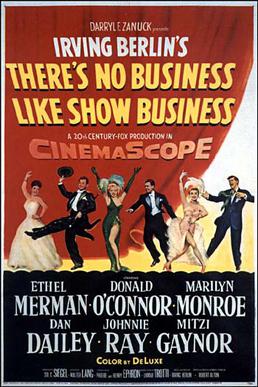
Irving Berlin's There's No Business Like Show Business is a 1954 American musical comedy-drama film directed by Walter Lang. It stars an ensemble cast, consisting of Ethel Merman, Donald O'Connor, Marilyn Monroe, Dan Dailey, Johnnie Ray, and Mitzi Gaynor.
The star system was the method of creating, promoting and exploiting stars in Hollywood films from the 1920s until the 1960s. Movie studios would select promising young actors and glamorise and create personas for them, often inventing new names and even new backgrounds. Examples of stars who went through the star system include Cary Grant, Joan Crawford, and Rock Hudson.
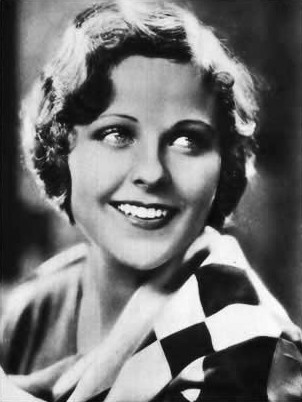
Barbara Kent was a Canadian film actress, prominent from the silent film era to the early talkies of the 1920s and 1930s. In 1925, Barbara Kent won the Miss Hollywood Beauty Pageant.

A singing cowboy was a subtype of the archetypal cowboy hero of early Western films. It references real-world campfire side ballads in the American frontier, the original cowboys sang of life on the trail with all the challenges, hardships, and dangers encountered while pushing cattle for miles up the trails and across the prairies. This continues with modern vaquero traditions and within the genre of Western music, and its related New Mexico, Red Dirt, Tejano, and Texas country music styles. A number of songs have been written and made famous by groups like the Sons of the Pioneers and Riders in the Sky and individual performers such as Marty Robbins, Gene Autry, Roy Rogers, Tex Ritter, Bob Baker and other "singing cowboys". Singing in the wrangler style, these entertainers have served to preserve the cowboy as a unique American hero.

The race film or race movie was a genre of film produced in the United States between about 1915 and the early 1950s, consisting of films produced for black audiences, and featuring black casts. Approximately five hundred race films were produced. Of these, fewer than one hundred remain. Because race films were produced outside the Hollywood studio system, they were largely forgotten by mainstream film historians until they resurfaced in the 1980s on the BET cable network. In their day, race films were very popular among African-American theatergoers. Their influence continues to be felt in cinema and television marketed to African-Americans.

Richard Dyer is an English academic who held a professorship in the Department of Film Studies at King's College London. Specialising in cinema, queer theory, and the relationship between entertainment and representations of race, sexuality, and gender, he was previously a faculty member of the Film Studies Department at the University of Warwick for many years and has held a number of visiting professorships in the United Kingdom, the United States, Italy, Sweden, Denmark, and Germany.
A superstar is someone who has great popular appeal and is widely known, prominent, or successful in their field. Celebrities referred to as "superstars" may include individuals who work as actors, musicians, athletes, and other media-based professions.

Cora Susan Collins is an American former child actress who appeared in films during the Golden Years of Hollywood, and although she did not make the transition to adult star, and her career in Hollywood ran a brief 13-year tenure, she appeared in 47 films.
References
- 1 2 Paul McDonald (6 September 2013). The Star System: Hollywood's Production of Popular Identities. Wallflower Press. pp. 87–. ISBN 978-0-231-50324-2.
- ↑ Dyer, Richard; McDonald, Paul (1998). Stars (2 ed.). BFI Publishing. p. 62. ISBN 9780851706436.
- ↑ Surowiecki, James (May 28, 2001). "Hollywood's Star System, At a Cubicle Near You". The New Yorker .
- ↑ Strachan, Robert; Leonard, Marion (2005). "Popular Music in Film". Continuum Encyclopedia of Popular Music of the World: Performance and production. Vol. II. A & C Black. pp. 318–321. ISBN 978-0-8264-6321-0.